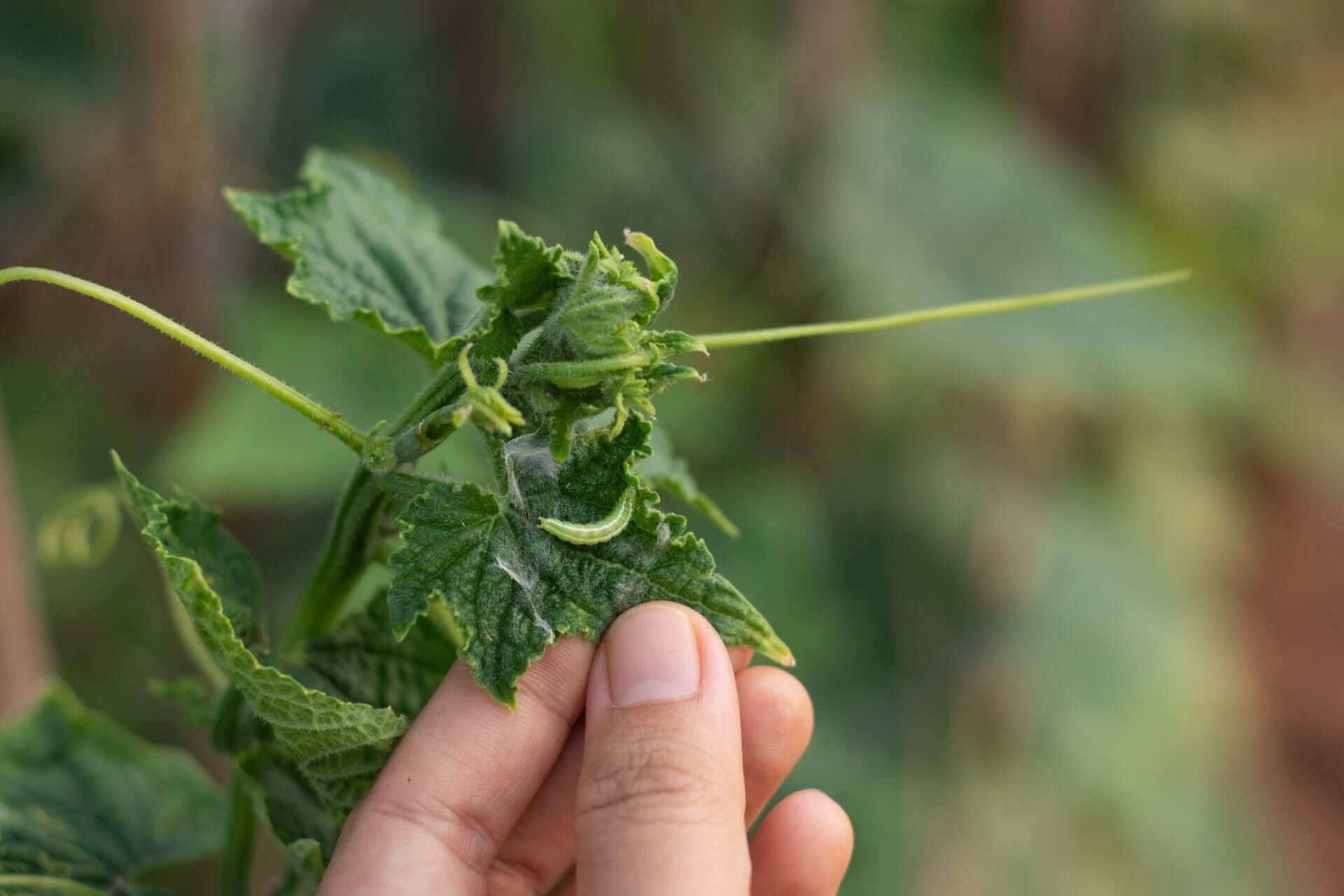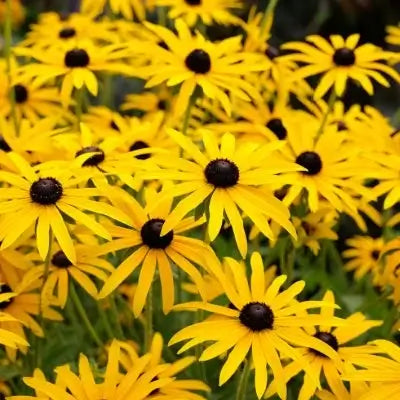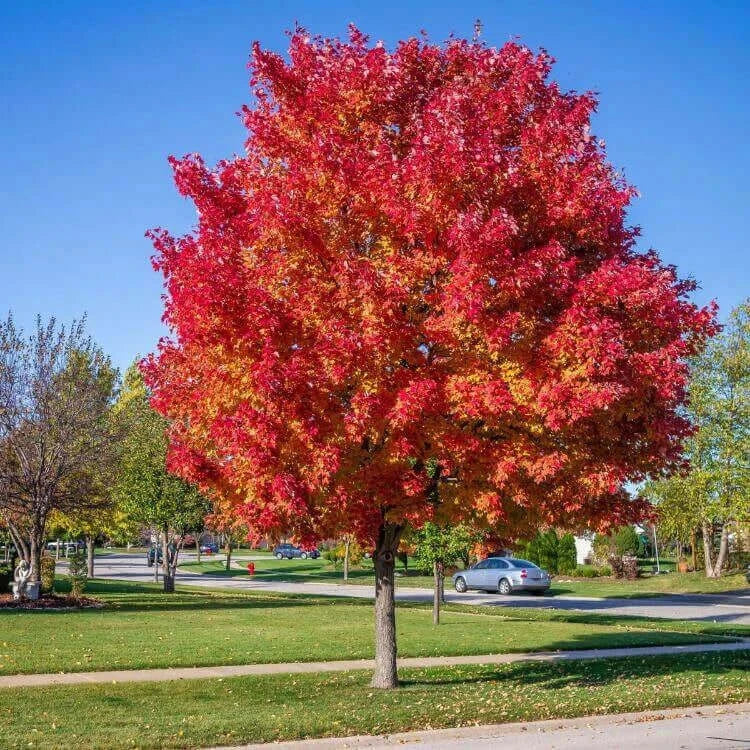They can also be easy to get you from your winter slumber. And the best part is that these flowering plants and trees are easy to maintain. If your yard could benefit from an extra spring boost, consider planting any of these options below to bring color to your garden, as they bring a fantastic beginning to the season every year!
Types of Trees
Pawpaw Tree
Asimina triloba, the pawpaw tree, is a straightforward North American native species. Gardeners appreciate it for its attractive appearance and the huge, delicious fruit it produces. In summer, the tree has large green, emerald-colored leaves that turn brilliant yellow in autumn.
This tree thrives in natural areas or woodland because it thrives in semi-shaded or shaded environments. It also can tolerate the sun's rays for a long time, but be aware of the moisture. Paw the paw fruit is a hefty one and will grow oval-shaped. Mango trees are tropical and grow only in subtropical and tropical climates.
Memorial Tree
There's an easier way to pay tribute to the memory of a loved one than to create a memorial tree. The living memorial symbolizes the various branches in the deceased's family tree, and the canopy symbolizes your loved ones watching over your loved ones from the heavens. The cemetery can be sad and unfriendly. But placing trees in your backyard or your garden makes a relaxing spot. You can add a bench as the tree has grown to create a space to reflect on your shared memorable moments.
Here are the tree species from which you can pick:
- Maple Tree: A famous maple tree symbolizes prosperity and leadership. The story of the maple tree is one of triumph over challenges. Maple trees are strong even in extreme heat and cold.
- Oak Tree: A majestic oak tree symbolizes perseverance and wisdom despite daunting odds. Acorns are demanding and must be pushed out of their sturdy exterior and into hard soil to grow into oak trees.
Chinese Chestnut Tree
Castanea mollissima, also known as the Chinese Chestnut Tree, is a medium-sized tree that thrives under full or partial sunlight. It only requires adding organic matter or fertilizer every two years and an inch of water per week. The chestnuts are gentler in comparison to American chestnuts. You can pick them for baking, roasting, or boiling. They're tasty and are a great delight for those who love nuts.
However, some growers like to leave the nuts on the trees to observe the wildlife in the area--birds, squirrels, and chestnuts go mad eating them during the fall. This Chinese Chestnut Tree is an outstanding choice to add an Asian theme garden or an ornamental focal point. It can grow to approximately sixty feet tall and forty feet wide.
Hornbeam Tree
Carpinus caroliniana, The Hornbeam tree, is a deciduous landscape tree native to the east of the United States. The hornbeam tree with short stature is a relative of the American beech. Like the beech tree, the hornbeam tree is fond of humid soil with full sun and the sun's filtered light and can withstand drought. Carpinus caroliniana is drought-tolerant and heat-tolerant. It is also pest-resistant and disease-resistant.
It is a slim gray trunk with an appearance proportional to its height, and the texture is ridged.
The leaves are blue-green on top and lighter beneath. Each leaf is approximately three to five inches long and as wide as two inches. The leaves are oval, alternate along stems, and feature serrated edges. In springtime, the flowers are small and yellow.
Elderberry
Elderberry, a deciduous, multi-stemmed tree of small size, is a native plant native to the United States. The elderberry plant is a thorny tree that thrives in almost every one of the states that are part of the contiguous states. States. Besides "elderberry," other famous names describe the plant: American elderberry, American elderberry, Common elderberry, etc.
The species is natural and grows without human intervention. You can see them on ditch banks, west—or south-facing edges of trees, along utility or light lines, or in open fields. These areas are their preferred choice for a full-sunny or partly-sunny location.
Okame Cherry
It is believed that the Okame the cherry is a Japanese natural species. It is the Okame Cherry Tree. It is tiny for a tree. It can reach a height of 30 feet. It needs plenty of sunshine and around one inch of water each week. Apart from a bit of care when beginning it, Okame cherry trees are easy to care for. Okame cherries are simple to manage and will grow well, particularly after being established.
It isn't opposed to the hot, humid summers. But, it's resistant to drought, diseases, and insect-resistant. Plant the tree as an ornamental focal point to enhance your sidewalk or driveway, as a tree for a patio, in a pollinator garden, or in any other place you wish to see abundant blossoms throughout bloom in the spring. The Okame cherry tree is an ancestor of the rose family.
Crabapple Tree
A favorite because of its beautiful blooms in spring, the crabapple is a native deciduous tree found in all USDA zones of growth. Its size is perfect for smaller yards since it can reach between 20 and 30 feet when it reaches maturity. The crabapple tree is an attractive ornamentation feature for a shaded garden without completely obscuring the area.
In addition to using the gorgeous crabapple tree for an attractive shade garden, many homeowners plant several trees to create a driveway or mark the boundary of their property. The possibilities for this tree are endless. The crabapple tree is a low-maintenance alternative. It's a native of the American eastern coast's forested areas.
Red Maple Tree
Acer rubrum, previously Acer sanguineum, also known as the more common name of red Maple, is an American native deciduous tree species. It is found in virtually every part of the contiguous United States. It is a Red Maple tree that is relatively easy to maintain. It will satisfy its essential needs once it is planted. It all starts with the location. Choose an area with a lot of sunshine that will get at least 6 hours of daily sunlight. A partial sun may suffice, but the hues must be more striking.
The species is tolerant of many soil types, but it needs to be covered with woody material before you can plant it. Consider the conditions for growth in the native forests, which is logical! Add nutrients to the soil by adding mulch for hardwoods, peat moss compost, and leaf litter. After planting, you'll only need to mulch the tree in spring and again in autumn.
Redbud Tree
Cercis canadensis Cercis canadensis, known as The American Redbud Tree, is an outstanding beauty that announces the beginning of spring and warmer weather with a display of vibrant, unapologetically pink flowers. Due to its broadening area and popularity due to its wide-ranging growth and popularity, the redbud is among the most sought-after trees. It doesn't matter if you plan to plant it to draw pollinators to your garden in the early spring or to use it as an ornamental tree in a formal garden. You'll enjoy the gentle nature of the redbud tree.
It's a great understory tree near taller trees, as it enjoys shade and sunlight. Once it has established a robust root system, it's drought-resistant, cold-tolerant, and heat-tolerant. Most people pick redbuds because of the abundance of blooms in spring. They are delicate pea-shaped flowers that bloom in huge, big, dazzling groups.
Wisteria Tree
A deciduous tree that blooms with a distinctive floral aroma, Wisteria plants can reach up to twenty feet when they have sturdy support. The Wisteria sinensis tree is an Asian native plant often seen in natural forests and natural areas across the United States. It can be planted in full sun or partial sunshine using organic materials such as peat moss, mulch made from hardwood, or chopped leaves mixed into loose soil.
It is rugged and drought-tolerant as well as cold-tolerant. It requires little care, including pruning to direct the growth or eliminate frost damage. It is possible to "train" it to grow straighter by investing time and perseverance. The leaves of Wisteria are green and elliptical and grow in a different pattern. They are compound and grow in groups of Seven to 15 leaves. The leaves are about six inches long.
Kwanzan Cherry
Prunus Kanzan is more commonly called the Kwanzan Cherry Tree. The beautiful, flowering deciduous tree is tiny but very ornamental. Kwanzan cherries are a local Japanese species. However, American gardeners adopted its use more than 100 years ago, and it became a popular plant nationwide. Kwanzan cherries are tiny for a tree. They can reach a height of 40 feet or less.
It requires full sun or partial shade and 1 inch of water each week. Apart from some initial care before you plant it and it will grow well, the Kwanzan cherry tree can be simple to establish and requires minimal maintenance after it strengthens. It is a fan of hot, humid summers. Apart from enjoying the heat, it's drought-tolerant, pest-resistant, and highly resistant to diseases.
Cultivating a Yard for Early-Spring Blooms
You must integrate careful planning with thorough preparation and continuous maintenance to create an early-spring blooming garden. The essential element of success in cultivating flowering trees that burst into color with rising temperatures is to understand their specific needs despite the task seeming overwhelming at first. Maintaining healthy and lively trees through winter transitioning into renewal season requires a balanced combination of proper soil health management, pruning techniques, and strategic mulching and water conservation practices. You will find here an in-depth guide explaining how to modify your garden environment, which helps maximize early bloom chances without suggesting particular species.
To establish a yard that supports early spring bloomers, you should carefully examine the microclimates within your outdoor space. Microclimates describe the minor differences in temperature alongside wind exposure and moisture levels between individual locations. Temperature variation by several degrees exists across different areas within a single yard due to differences in sun exposure, proximity to structures, and changes in ground elevation. Your flowering trees can bloom earlier if you find yard spots protected from cold winds where sunlight and warmth persist during calm days. On a chilly sunny day, walk around your yard to mark areas with extended sunlight exposure and those protected from harsh winds. Warm areas protected from severe weather are optimal locations to establish plantings that will bloom after winter.
After determining the best locations for planting in your yard, you need to prepare the soil. Any tree needs healthy soil to thrive, but this becomes even more essential for trees whose flowering cycle requires stable nutrient access. The initial step in preparing your soil involves testing its pH level. To achieve the slightly acidic range preferred by many flowering plant varieties, adjust the soil when it shows too much acidity or alkalinity. Applying compost regularly creates balanced soil that allows proper drainage while maintaining sufficient moisture to keep roots hydrated. Adequate drainage is essential because persistent soil moisture causes root rot and fungal diseases, damaging tree health.
Strategic pruning serves as a key practice for promoting early-spring color. Trees have different pruning requirements, but many benefit from trimming once the flowering period concludes. The technique protects buds that develop on old wood during the following year. Knowing if a tree produces blossoms on its old or new growth is essential. The best time to prune trees that bloom on last year's growth is right after the petals drop so you can protect the buds that will produce next year's flowers. Avoid aggressive pruning during late winter unless you fully understand the tree's growth habits because excessive cutting can reduce future flowering potential.
Mulching helps budding trees reach their full potential by creating a favorable environment for their development. A layer of organic mulch several inches thick around the base of trees helps maintain stable soil temperatures and moisture levels while preventing weed growth. Bark chips, shredded leaves, and other natural byproducts serve as materials for constructing this organic barrier. Maintain an open space between the trunk and any piled mulch to protect the tree. Creating a gap between the mulch and the tree trunk helps stop rotting, pest infestations, and development, which occurs when bark gets covered.
Water management works with soil health and proper maintenance to establish an ideal setting for flowering. The appropriate moisture level is essential during late winter and early spring because trees begin to exit their dormant state at this time. Gentle watering on mild days helps maintain root hydration when frozen ground conditions persist. Avoid excessive watering because continuous saturation will harm delicate root systems. You can promote healthy blooms by tracking weather changes and modifying your irrigation plan.
A key concept requires combining patience with ongoing observation. Without gradual development, you cannot expect your garden to yield early spring flowers. Trees require several growing seasons to develop their root systems and adjust to their environment before they produce notable seasonal displays. During this time, monitoring leaf color changes, bark condition, and bloom quality is essential to modify watering and feeding methods. A slight adjustment in mulch thickness or pruning times leads to a lackluster display or an early-season vibrant spectacle.
Homeowners can create a nurturing environment for blooming trees by investing their time and effort into selection of a site and preparation of the soil, as well as implementing proper pruning and mulching techniques and regular watering. All these measures work together to ensure plant health, and colorful displays start as temperatures increase in springtime. Through these gardening efforts, the yard transforms into a natural canvas displaying the first hints of spring while encouraging outdoor exploration to observe nature's renewal.











































































































